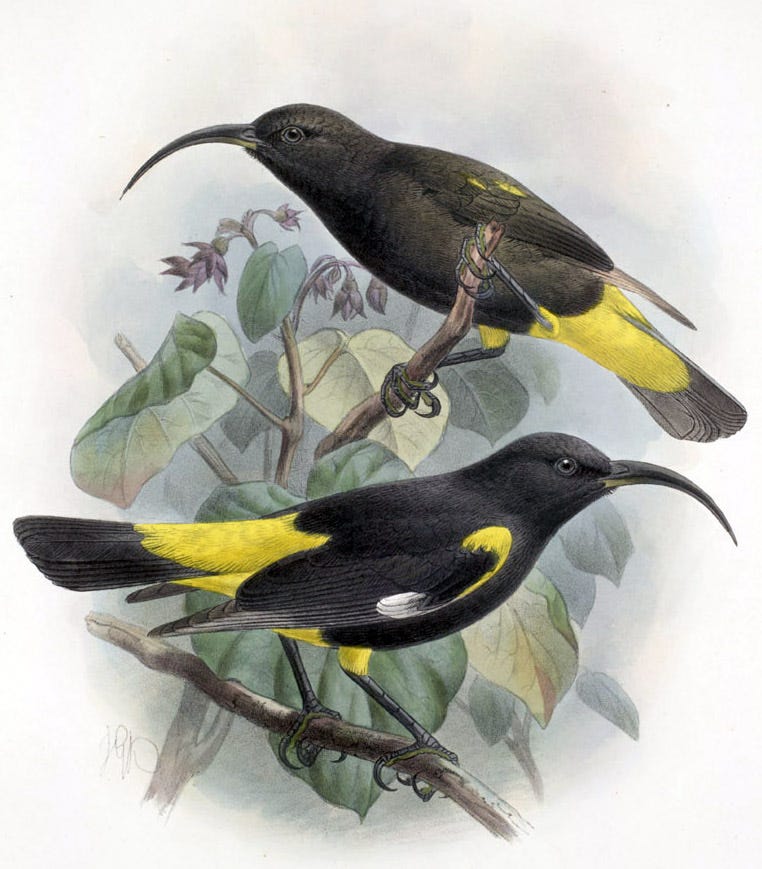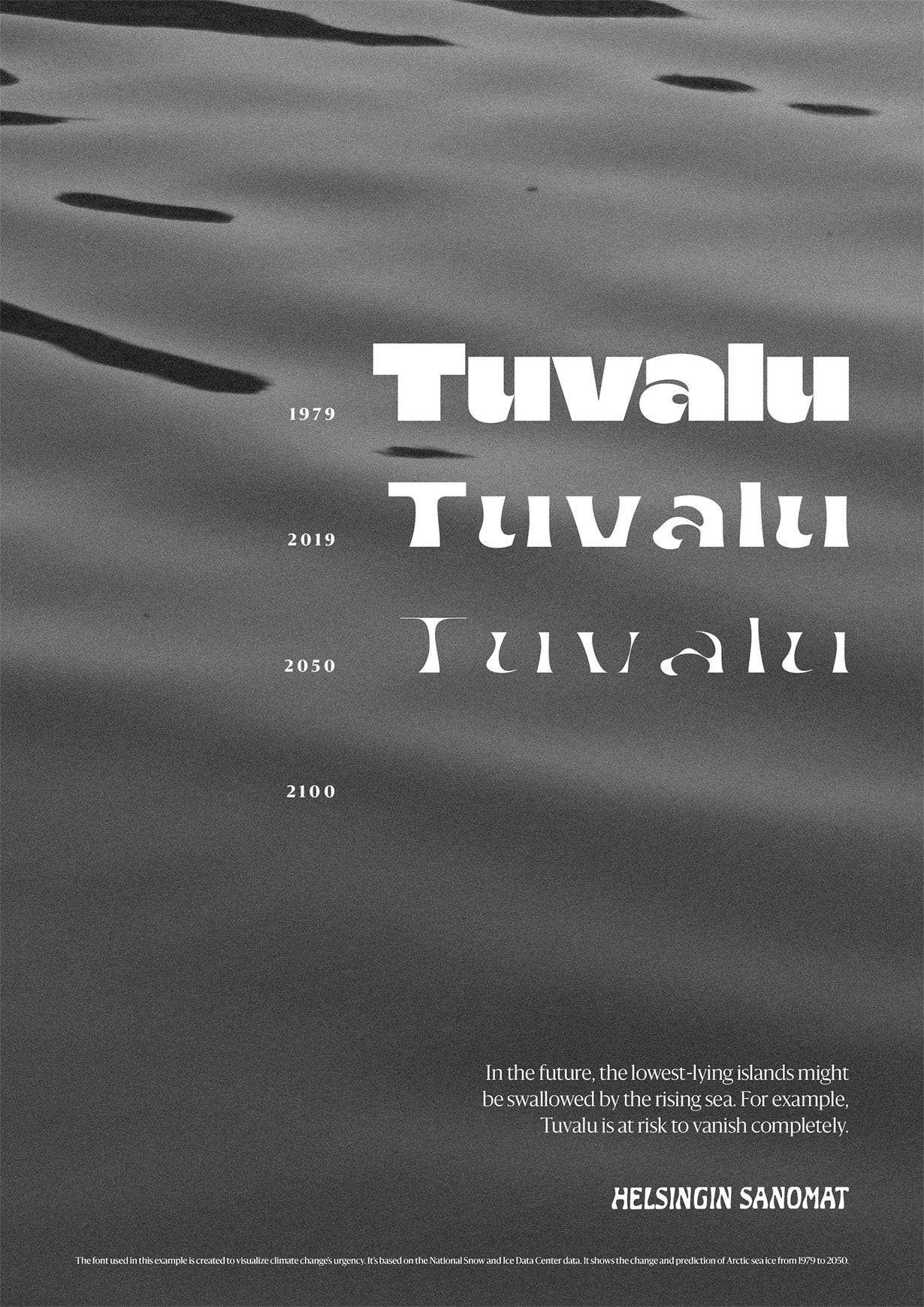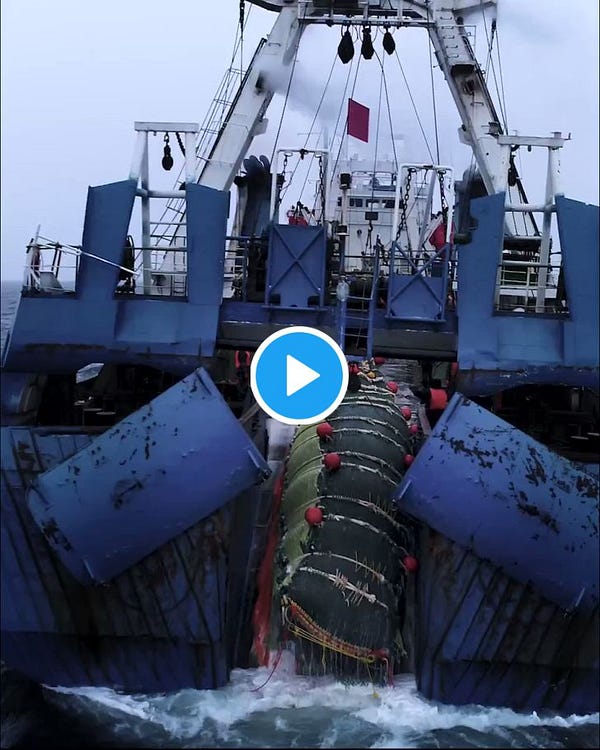🌿Wild Ones #41: Environmental Communication Digest
Narrative Power Analysis + Amitav Ghosh on Climate Awareness and Action + Climate Crisis Font + The Art of Erasure EcoPoetry + More!

Hi everyone, welcome back to Wild Ones, a weekly digest by me, Gavin Lamb, about news, ideas, research, and tips in environmental communication. If you’re new, welcome! You can read more about why I started Wild Ones here. Sign up here to get these digests in your inbox:
🌱Environmental Keyword
‘Narrative Power Analysis’
This week, I’m still finishing up Re:Imagining Change: How to Use Story-Based Strategy to Win Campaigns, Build Movements, and Change the World, by Patrick Reinsborough and Doyle Canning (2017). Last week, I took a quick look at some of the ideas behind the book and I’m learning a lot! The communication tools the book examines aren’t necessarily new, but when these tools are brought together with ideas from the grassroots social change work the Center for Story-Based Strategy has been doing over the years, it adds a whole new dimension to these old tools: communication tools like framing, critical discourse analysis, and narrative analysis, which I’m looking at in today’s digest.
To recap, the authors Reinsborough and Canning explain the idea behind story-based like this: “Story-based strategy links social movement building with an analysis of narrative power that places storytelling at the center of social change. It means, first and foremost, looking at social change strategy through the lens of narrative.”
But how should you go about “looking through the lens of narrative?” The book devotes an entire chapter to this question by introducing a communication tool called: ‘Narrative Power Analysis.’ Here’s a helpful definition they give in the book:
“A narrative analysis of power encourages us to look at how meaning is operating and ask: Which stories define cultural norms? Where did these stories come from? Whose stories were ignored or erased? What new stories can we tell to more accurately describe the world we see? And, perhaps most urgently, what are the stories that can help move us toward the world we desire?”
They go on to break Narrative Power Analysis down into a practical framework with five storytelling elements:
Conflict: What environmental problem does a story identify, and how is tension and conflict created by this definition of the problem?
Characters: Can ‘people see themselves reflected in the story and choose sides’?
Images: “When a story is showing, instead of telling, it offers the audience the opportunity to draw their own conclusions.”
Foreshadowing: What hints to its outcome does a story provide? What promises about the future does a story hint at as it builds up?
Assumptions: What assumptions hold the story together? Assumptions are the “unstated part of a story that you have to accept in order to believe the story is true.”
The authors write that “This simple framework, can be used to apply a narrative power analysis to any story—either for deconstructing a story you want to challenge or generating your own social change narrative.”
They also have a helpful 2-page cheatsheet explaining these storytelling elements you can download here.
On a side note, ‘narrative’ has become one of those jargony keywords in academia with a huge range of definitions and applications across disciplines, especially in communication research. But if you’re looking to take a deeper dive into the role of narratives and storytelling, especially for environmental communication, here is an interesting place to start:
Going back to the Center For Story-Based Strategy, way back in 2013 they organized a series of talks on the topic of ‘narrative strategy and social change.’ These videos gave me a better idea of the ideas behind Story-Based Strategy, with some useful case studies on how it is being applied.
👀 What I’m watching
Amitav Ghosh Reading & Conversation with Emily Raboteau: “Amitav Ghosh, author of The Great Derangement, will read and discuss the imaginative possibilities of climate awareness and action.”


🎧 What I’m listening to
“Gretchen Miller, radio documentary-maker and podcaster, interviews Tema Milstein, co-editor of the Routledge Handbook of Ecocultural Identity, about the key findings from the book, and a new term of this epoch, and why it's not the Anthropocene.”
🔍 Tools & Resources I’m exploring
A free font for visualizing the urgency of the climate crisis. I discovered this font over on climate writer/activist Bill Mckibben’s newsletter. The font appears to melt depending on which decade you choose. Here’s a description from the creators at the Finnish Newspaper Helsingin Sanomat.
“The font is intended to be used by anyone who wishes to visualize the urgency of climate change. Especially the media can use it to enhance its climate-related storytelling through illustrations and dramatizations. Newspaper Helsingin Sanomat is at the moment using the font to draw attention to its climate-related stories.”


📰 News and Events
A story from a couple of years ago, but a fascinating piece on “Humans Are Destroying Animals’ Ancestral Knowledge: Bighorn sheep and moose learn to migrate from one another. When they die, that generational know-how is not easily replaced.” By Ed Yong in the Atlantic (from 2018). Here’s a quote that stuck with me:
“Wildlife conservation isn’t just about raising the numbers on a population count. It’s also an act of cultural preservation. When rangers stop poachers from killing an elephant matriarch, they’re also saving her memories. When conservationists preserve routes over which bighorn sheep can travel, they’re keeping the animals’ traditional knowledge alive for future generations.”
Super last-minute deadline but…looks interesting!: The Art of Erasure (Eco)Poetry: Edge Effects is now inviting submissions of erasure poetry. Submit yours by April 7, 2021: “While we will accept submissions that admire and contemplate more-than-human worlds, we also welcome submissions that broaden existing definitions of the “environment.” Selected poems will be published in a special mini-series to mark National Poetry Month and Earth Day.”
📚 Research
Continuing on the narrative/storytelling theme today, this is a fascinating article by environmental historian Bill Cronon: A Place For Stories: Nature, History, and Narrative (pdf). In it, he explores two totally conflicting stories about a single event, the ‘Dust Bowl’ in the 1930s.
And this chapter by Michael D. Jones and Holly Peterson gives a nice overview of narrative in climate communication: Narrative Persuasion and Storytelling as Climate Communication Strategies.
Human–Animal Communication. By Don Kulick, in the Annual Review of Anthropology (2017).
I’ve been following the controversy surrounding the Netflix documentary Seaspiracy since it came out last week. Here were some of my first thoughts about the film, and here are some of ideas/debates I’ve been following since:
New book I’m hoping to read at some point: The Outlaw Ocean: Crime and Survival in the Last Untamed Frontier. By Ian Urbina.
Upcoming Zoom event (Aril 8) from Hakai Magazine: Interpreting Seaspiracy.
Seaspiracy: Should we stop eating fish? By Charles Clover in Blue Marine Foundation.
And some tweet threads about the doc I’m thinking about…


💡 Ideas
Rereading this interesting, and conflictive exchange between famous animal rights advocates Peter Singer and Tom Regan from way back in 1985. The Dog in the Lifeboat: An Exchange. In The New York Review.
QIKIQTAĠRUK: Almost an Island. By Lauren E. Oakes
with Kaisa Reese Ahluniq Kotch in Emergence Magazine. Here’s an excerpt that I’m thinking about:“I wondered if this was one of the songs she had sung to them, but Kaisa told me that when she sings for elders, she tends to sing in Iñupiaq. ‘I try to use as much Iñupiaq as possible, because you can see in their faces how it warms their hearts to hear a younger generation speaking the language that was taken away from them.’ There are new leaders rising; may their voices be heard.”
Mapping the Planetary: Five Questions for Dipesh Chakrabarty. An interview by Doron Darnov in Edge Effects.
Hope Matters: Why Changing the Way We Think Is Critical to Solving the Environmental Crisis. By Elin Kelsey: Kelsey “describes effective campaigns to support ocean conservation, species resilience, and rewilding, demonstrating how digital conservation is helping scientists target specific problems with impressive results.”
💬 Quotes I’m thinking about
“What do people care most about in the world they inhabit?
How do they use and assign meaning to that world?
How does the earth respond to their actions and desires?
What sort of communities do people, plants, and animals create together?
How do people struggle with each other for control of the earth, its creatures,
and its meanings?
And on the grandest scale: what is the mutual fate of humanity and the earth?
Good questions all, and starting points for many a story”– William Cronon, A Place For Stories: Nature, History, and Narrative.
✏️Writings from my desk
Thanks so much as always for your interest in my work, and if you found this digest useful, please consider sharing with others who might find it interesting too😊 I'd also love to hear from you. Leave a comment to let me know what you think about this digest, what areas of environmental communication you’re involved in/most interest you, or anything you’d like to see more of in Wild Ones:)






Oh wow -- that climate urgency font is really great. Who knew you could combine typography and climate activism in such a fresh, thoughtful way! A great newsletter as always, Gavin.